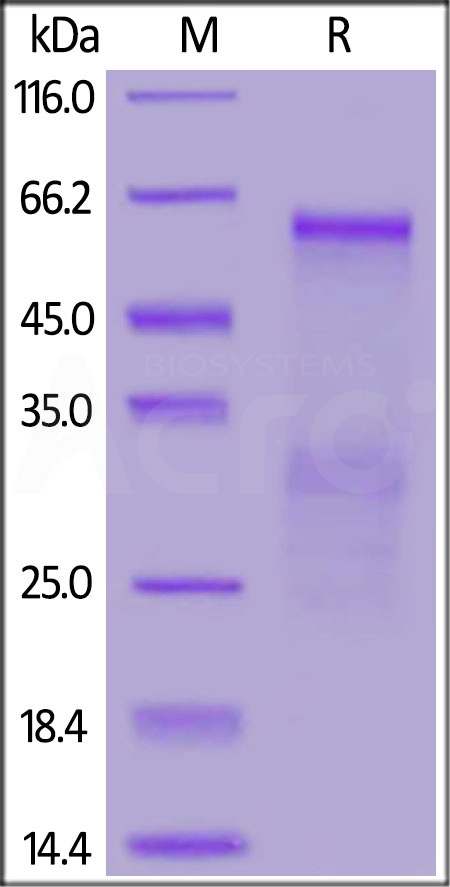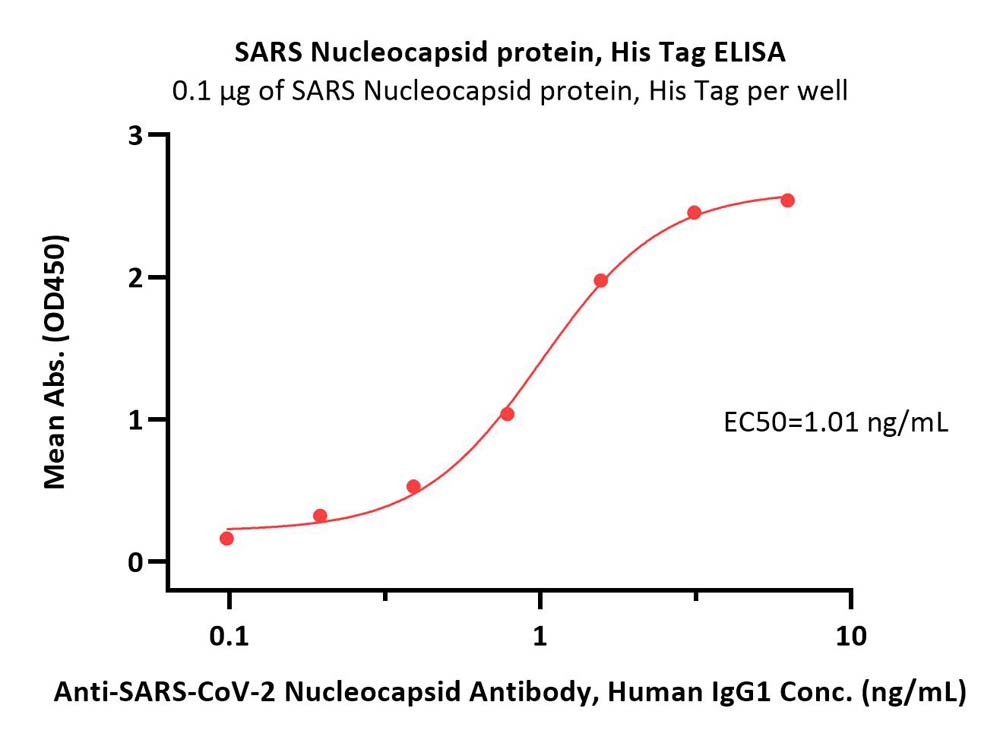分子别名(Synonym)
Nucleocapsid protein,NP,Protein N
表达区间及表达系统(Source)
SARS Nucleocapsid protein, His Tag (NUN-S5229) is expressed from human 293 cells (HEK293). It contains AA Met 1 - Ala 422 (Accession # NP_828858.1).
Predicted N-terminus: Met 1
Request for sequence
蛋白结构(Molecular Characterization)

This protein carries a polyhistidine tag at the C-terminus.
The protein has a calculated MW of 47.7 kDa. The protein migrates as 30-33 kDa and 55-60 kDa when calibrated against Star Ribbon Pre-stained Protein Marker under reducing (R) condition (SDS-PAGE) due to glycosylation.
内毒素(Endotoxin)
Less than 1.0 EU per μg by the LAL method.
纯度(Purity)
>90% as determined by SDS-PAGE.
制剂(Formulation)
Lyophilized from 0.22 μm filtered solution in PBS, Arginine, pH7.4 with trehalose as protectant.
Contact us for customized product form or formulation.
重构方法(Reconstitution)
Please see Certificate of Analysis for specific instructions.
For best performance, we strongly recommend you to follow the reconstitution protocol provided in the CoA.
存储(Storage)
For long term storage, the product should be stored at lyophilized state at -20°C or lower.
Please avoid repeated freeze-thaw cycles.
This product is stable after storage at:
- -20°C to -70°C for 12 months in lyophilized state;
- -70°C for 3 months under sterile conditions after reconstitution.
电泳(SDS-PAGE)

SARS Nucleocapsid protein, His Tag on SDS-PAGE under reducing (R) condition. The gel was stained with Coomassie Blue. The purity of the protein is greater than 90% (With Star Ribbon Pre-stained Protein Marker).
活性(Bioactivity)-ELISA

Immobilized SARS Nucleocapsid protein, His Tag (Cat. No. NUN-S5229) at 1 μg/mL (100 μL/well) can bind Anti-SARS-CoV-2 Nucleocapsid Antibody, Human IgG1 (Cat. No. NUN-S41) with a linear range of 0.1-2 ng/mL (QC tested).
Protocol
背景(Background)
Nucleocapsid (N) protein is the most abundant protein found in coronavirus. CoV N protein is a highly immunogenic phosphoprotein important for viral genome replication and modulation of cell signaling pathways. It was first identified by a research team while they were screening for ADP-ribosylated proteins during coronavirus (CoV) infection (Grunewald M. E., et al. 2017, Virology; 517: 62-68). The array of diverse functional activities accommodated in N protein makes it more than a structural protein but also an interesting target in the development of antiviral therapeutics. Because of the conservation of N protein sequence and its strong immunogenicity, N protein of coronavirus is chosen as a diagnostic tool.























































 膜杰作
膜杰作 Star Staining
Star Staining











